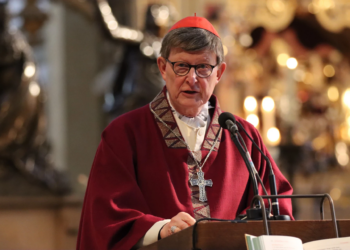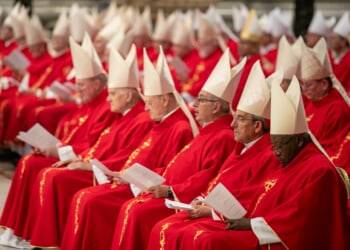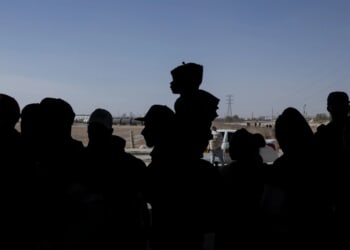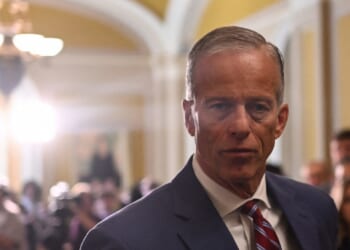CNA Staff, Apr 29, 2025 /
07:00 am
Pope Francis, who died April 21 at age 88, was laid to rest at the Basilica of St. Mary Major following his funeral on April 26.
As the world continues to mourn the late pope during the nine-day period known as “Novendiales” (also rendered “Novemdiales”), preparations are underway for the highly-regulated conclave process, which is the means by which a new pope is elected for the Church.
Here’s what you need to know about what will happen next.
Setting the stage: Who can take part in the conclave?
The task of electing the new pope falls solely upon the members of the College of Cardinals who are younger than age 80 and otherwise eligible or able to participate, of which there are currently 134.
Cardinal Giovanni Battista Re, 91, is the current dean of the College of Cardinals, i.e., the most senior member, elected from among the ranks of the cardinal bishops and confirmed by the pope. Normally, it would be Re’s job to move the conclave process forward once it gets underway.
Re is too old to take part in the conclave, however, as is his vice dean, Cardinal Leonardo Sandri. So the upcoming conclave will be directed by Cardinal Pietro Parolin, the next eligible most senior cardinal bishop and the Vatican’s secretary of state.
May 7: The conclave begins
The conclave system was formalized in 1274, and its procedures are spelled out in great detail in the 1996 apostolic constitution Universi Dominici Gregis of Pope John Paul II, which was amended slightly by Pope Benedict XVI and Pope Francis.
Normally, the day on which the conclave begins is to be the 15th day after the death of a pope, the 16th day of the interregnum (which just means the period between popes). It can begin up to the 20th day “for serious reasons,” or earlier than the 15th day if all the cardinals are present.
The Holy See Press Office announced Monday that the conclave will begin on the morning of May 7, with the Holy Mass for the Election of the Roman Pontiff in St. Peter’s Basilica.
That afternoon, the cardinals — only the electors — will make their entrance into the Sistine Chapel, chanting the “Veni Creator Spiritus,” invoking the Holy Spirit’s guidance. Once inside, each cardinal will take an oath to observe the procedures, maintain secrecy, and vote freely for the candidate he believes most worthy.
When the last of the cardinal electors has taken the oath, the master of papal liturgical celebrations, Archbishop Diego Ravelli, will give the order “Extra omnes” (“Everyone out”), indicating that all those not taking part in the conclave must leave the Sistine Chapel.
Other than the cardinals, the only people allowed to remain in the chapel are the master of papal liturgical celebrations and a clergy member chosen to preach a meditation to the cardinals. After the meditation is given, he and the master of papal liturgical celebrations will leave the chapel (though the master of papal liturgical celebrations will need to be readmitted several times during the process, particularly when a vote is about to happen).
The chapel doors will then be closed to the outside world until a new pope is chosen.
How does it work once the cardinals are inside?
(Story continues below)
Subscribe to our daily newsletter
The cardinals must swear to absolute secrecy both during and after the conclave process, and great care must be taken to ensure the Sistine Chapel has not been bugged. Whenever they leave the chapel — such as for meals and to sleep — the cardinals are not allowed to discuss anything about what took place in the chapel.
Inside the locked chapel, votes are taken among the cardinals once on the first afternoon session, and twice on each morning and afternoon session for each day of the conclave.
The ballot papers all bear the words “Eligo in summum pontificem” (“I elect as supreme pontiff”), above a space for the cardinals to write a name. During the vote, cardinals individually approach Michelangelo’s painting of the Last Judgment, profess an oath in Latin, and drop their ballot into a large urn.
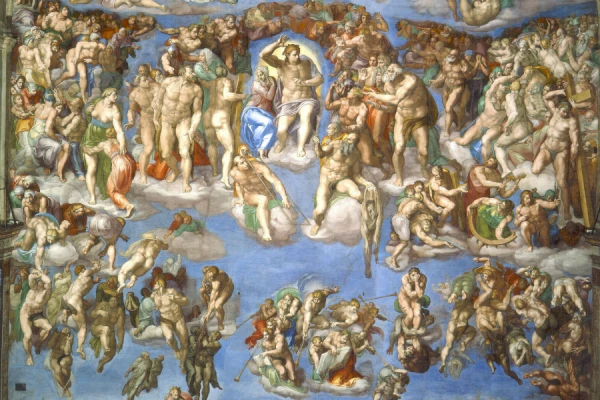
This is the oath that the cardinals pray as they vote:
“I call as my witness Christ the Lord, who will be my judge, that my vote is given to the one who before God I think should be elected.”
Three randomly designated cardinals, known as scrutineers, then tabulate the results in front of the assembly. First, they count the ballots, and if the number of ballots doesn’t match the number of electors, they are burned immediately and a new vote is taken.
If the number of ballots is correct, the three scrutineers read each ballot, the last of the three reading the name aloud and writing it down. Each elector also writes down the running result on a sheet provided for this purpose. Each ballot, after it is counted, is pieced with a needle and placed on a thread for security.
Another three randomly selected cardinal electors, the revisers, check the ballot count and the notes of the scrutineers to ensure the tabulation of the ballots was carried out exactly and faithfully.
Three additional cardinal electors are randomly chosen as “infirmarii,” whose job it is to assist any electors who, although within the enclosure of the conclave, are too sick to be present in the Sistine Chapel. The infirmarii take with them a locked box that, having been shown to the other electors to be empty, receives the votes of the infirm. They then return it unopened to the scrutineers.
A Catholic man needs two-thirds of the votes — in the present case, 90 votes — to be elected the next pope. Looking at the record of the last century of conclaves shows that the college elects a new pope, on average, by the afternoon of the third day, after about eight ballots.
The new pope
When a voting session concludes without a man reaching the required majority, the ballots are burned with wet straw, causing black smoke to emanate from the chimney of the Sistine Chapel. However, if a pope is elected, the ballots are burned with the addition of a chemical agent, producing the famous white smoke.
Before that happens, however, there is a process that must be followed once a man receives the required number of votes.
After the junior cardinal deacon has readmitted the secretary of the college and the master of papal liturgical ceremonies, the cardinal dean, or the cardinal who is first in order and seniority, goes to the one elected and asks:
“Do you accept your canonical election as supreme pontiff?”
With consent he becomes bishop of Rome and the pope (thus ending the conclave, unless the new pope decides to keep it in session for some reason). The cardinal dean then asks:
“By what name do you wish to be called?”
The master of papal liturgical ceremonies, with the witness of the two masters of ceremonies (who are now summoned), then will draw up a document certifying the consent of the man elected and the name he has chosen.
The new pope spends a few moments in a room off the Sistine Chapel known as the Room of Tears, where he is dressed in his white papal vestments. Each cardinal then comes forward in turn and makes an act of homage and obedience to the new pope. An act of thanksgiving to God is then made.
The senior cardinal deacon announces from the loggia of St. Peter’s to those gathered in St. Peter’s Square: “Habemus papam!” (“We have a pope!”) and what name he has taken. The newly elected pope then comes out to address and bless the city and the world (“urbi et orbi”).







